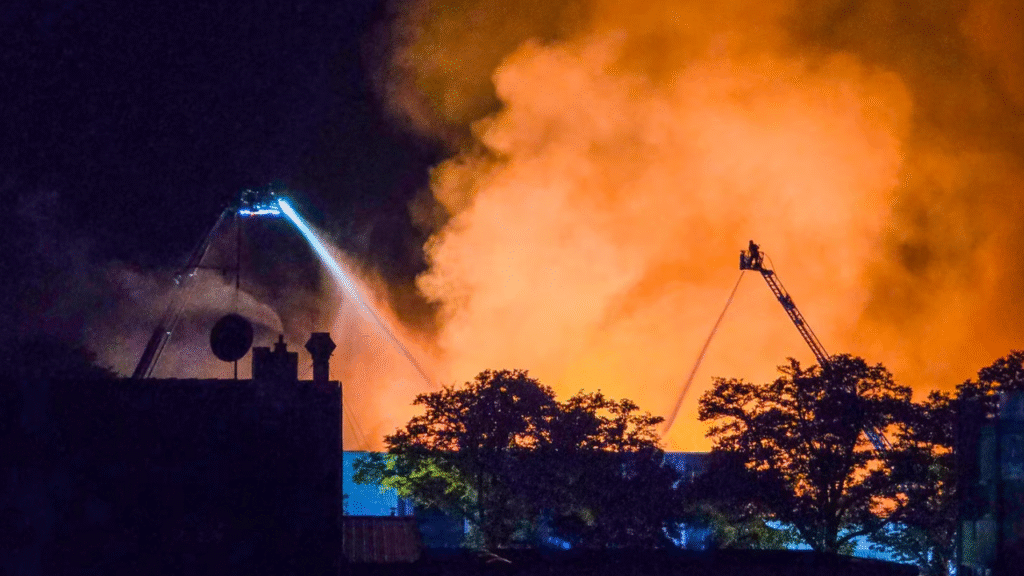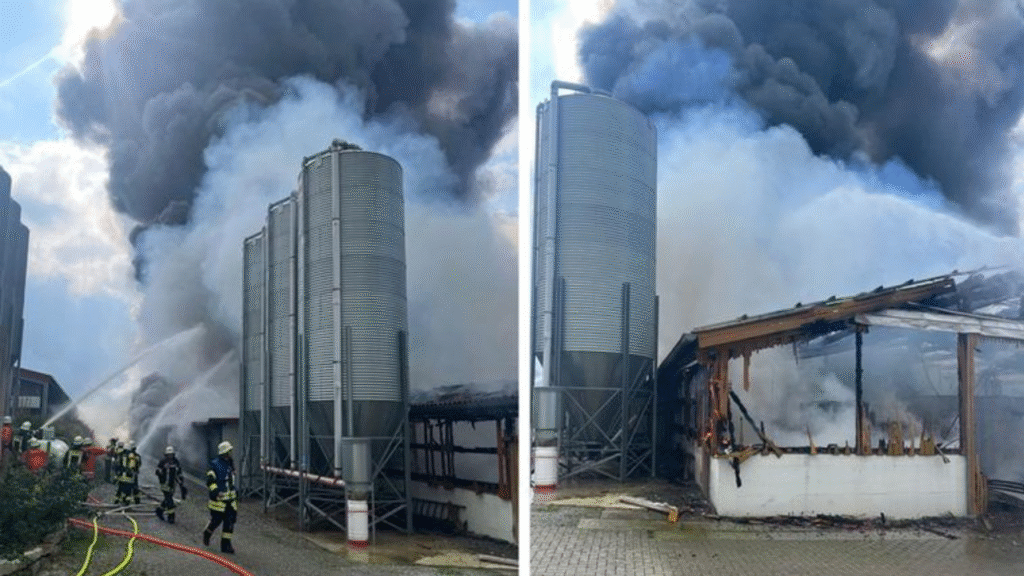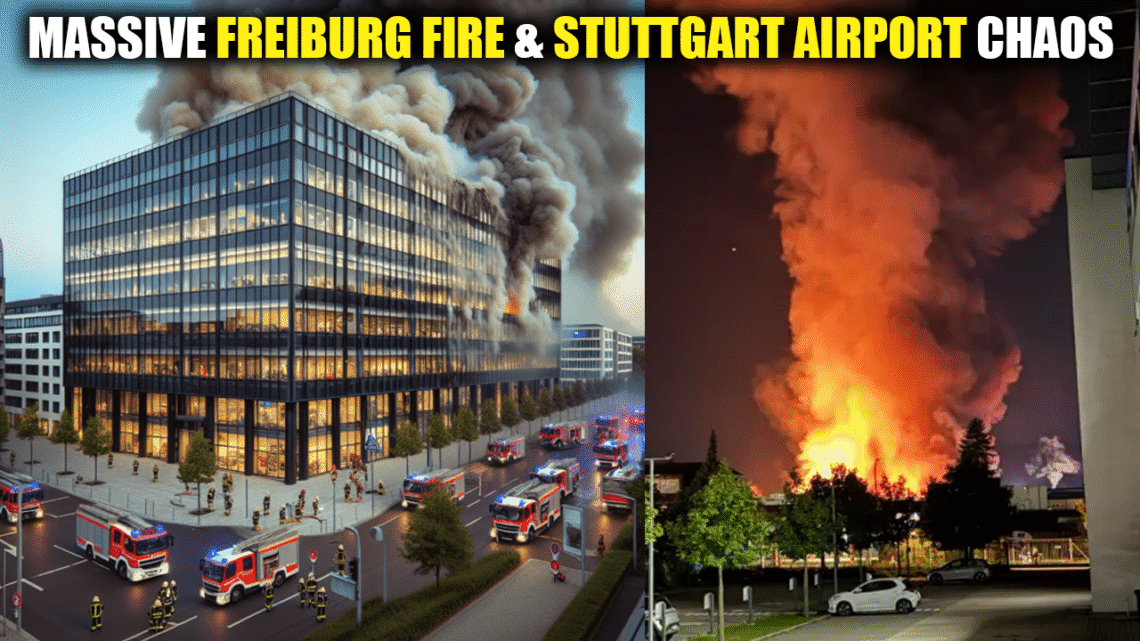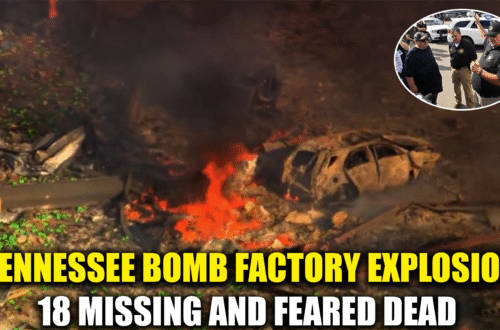On the evening of October 1, 2025, a catastrophic blaze erupted in the Hochdorf industrial area of Freiburg, Germany. The Freiburg Industrial Fire Chaos sent thick smoke into the sky and triggered disruptions across the region. Not only did the fire devastate a major warehouse, but it also created delays and cancellations at Stuttgart Airport. In this article, we explore the fire’s causes, its effects, and the lessons for businesses and authorities.

The Incident: How the Fire Started
Blaze Origin in Hochdorf
The Freiburg Industrial Fire Chaos began in a large commercial facility in Hochdorf. Witnesses saw flames and dense smoke spreading rapidly. Firefighters rushed to the scene and battled the fire through the night.
Flammable materials inside the warehouse fueled the fire’s rapid spread. Despite their best efforts, firefighters faced immense challenges, and the blaze caused substantial property damage.
Emergency Evacuations
Authorities immediately evacuated nearby buildings to protect residents. They also closed surrounding roads and set up a safety perimeter. Fortunately, no fatalities occurred. However, one worker suffered minor injuries and received prompt medical attention.
Environmental and Air Quality Concerns
The fire released thick smoke containing pollutants and particulate matter. Therefore, authorities issued air quality advisories for nearby neighborhoods. Residents were advised to stay indoors and avoid strenuous outdoor activities until the air cleared.
Impact on Stuttgart Airport
Flight Disruptions and Delays
The effects of the Freiburg Industrial Fire Chaos reached far beyond the industrial district. For instance, Stuttgart Airport, located roughly 150 kilometers away, experienced serious operational disruptions.
Flights were delayed or canceled because air traffic controllers restricted certain routes due to smoke. As a result, passengers faced long waits, and airlines scrambled to adjust schedules. Travelers had to check real-time updates and prepare for extended delays.
Safety Measures and Investigations
Authorities launched a detailed investigation to determine the fire’s cause. Preliminary reports indicate the blaze may have started accidentally. Meanwhile, Stuttgart Airport implemented additional safety measures.
Specifically, airport staff activated enhanced fire detection systems and reviewed emergency response protocols. Moreover, personnel underwent extra safety drills to prepare for future incidents.
Economic and Social Implications
Local Business Losses
The Freiburg Industrial Fire Chaos caused massive financial losses. The warehouse held valuable inventory, leading to millions in damages. In addition, neighboring companies temporarily halted operations due to evacuation and safety concerns.
Tourism and Travel Impact
Flight cancellations and delays affected tourism. Travelers missed connecting flights, hotel bookings were disrupted, and the local travel industry faced unexpected pressure. Airlines also had to provide compensation, adding to the economic burden.
Public Trust and Perception
Incidents like this can shake public confidence in safety measures. While authorities acted quickly, residents questioned emergency preparedness. Therefore, the event highlighted the need for stronger disaster readiness and infrastructure resilience.
Lessons and Best Practices
Industrial Safety
Businesses must implement strict fire prevention strategies. Regular inspections, proper storage of flammable materials, and advanced suppression systems are essential. Companies can learn from the Freiburg Industrial Fire Chaos to reduce future risks and minimize losses.
Emergency Preparedness
Both local authorities and transportation hubs must maintain comprehensive emergency plans. Clear communication, staff training, and evacuation drills ensure swift action during unexpected disasters. Consequently, these measures can save lives and reduce damages.
Environmental Monitoring
Fires of this magnitude can affect air quality across wide areas. Therefore, continuous monitoring and timely alerts can protect public health during industrial emergencies.

Real-Life Example: How Freiburg Responded
The city of Freiburg demonstrated rapid response during the crisis. Firefighters from multiple districts coordinated to control the blaze. Hospitals and emergency services managed potential casualties efficiently.
At Stuttgart Airport, staff implemented contingency plans to handle flight disruptions and maintain passenger safety. This collaboration minimized damage and ensured public safety, showing how planning can mitigate industrial crises.
Conclusion
The Freiburg Industrial Fire Chaos in Hochdorf highlights the risks linked to industrial operations and transportation networks. While authorities controlled immediate threats, the event emphasizes the importance of proactive safety measures, emergency preparedness, and environmental monitoring.
By learning from this incident, businesses and communities can enhance resilience. In addition, transparent communication and rapid responses strengthen public trust in safety systems.
FAQ Section
Q1: What caused the Freiburg Industrial Fire Chaos?
Authorities are investigating. Preliminary reports suggest the fire may have started accidentally.
Q2: Were there any casualties?
No fatalities occurred. One worker sustained minor injuries and received medical treatment.
Q3: How did the fire affect Stuttgart Airport?
Flight operations were disrupted, causing delays and cancellations that affected domestic and international travelers.
Q4: What safety measures were implemented after the fire?
Stuttgart Airport enhanced fire detection systems, revised emergency protocols, and trained staff for future incidents.
Q5: What are the broader impacts of this fire?
The fire caused economic losses, disrupted travel, and highlighted the need for improved industrial safety and emergency readiness.





